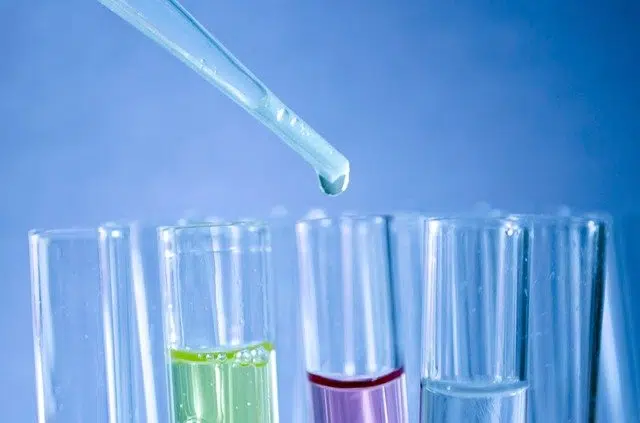
The limiting reagent is consumed in the reaction.
Reactive is an adjective that is used to describe that which generates a reaction . In the field of chemistry , reagent is used as a noun to name the substance that establishes a bond with another and that serves to reveal its presence and produce a new one.
In this sense, we can say that a limiting reactant is one that, within the framework of the reaction , is completely consumed . In this way, it limits the amount of product that can be formed.
Let's take the case of two substances that interact and produce a chemical reaction . If one of the substances runs out, as it is consumed during the process, the reaction will stop (it will not be able to continue developing). The consumed reactant acts as a limiting reactant: it limits the ability of the reaction to proceed and, therefore, also limits the amount of product that is generated by the reaction.
The adjusted chemical equation as a basis
The limiting reactant is said to be based on a balanced or adjusted chemical equation . It is possible to know the moles of the product obtained by knowing the number of moles of the reactant. The concept of reaction proportion defines the relative quantities of products and reactants that are part of a reaction, and it can be expressed in masses, millimoles or moles.
The mole, for its part, is a unit recognized by the International System of Units that is used to measure the amount of a given substance. It is worth mentioning that it is one of the seven basic units (also known as fundamental physical units ), which means that any of the others can be derived from these seven, which is why they are included in the set of derived units .
The limiting reactant ultimately runs out and stops the reaction. At this point, those reactants that still remain, since they are only partially consumed, are called excess reactants .
The limiting reagent and chemical yield
The level of product obtained once all of the limiting reagent is consumed marks the chemical yield of each reaction. Due to these properties , a scientist can maximize the use of reagents, using the right amount of limiting reagent and avoiding waste of resources.

The limiting reactant, when consumed, prevents the reaction from continuing.
This concept is of interest for stoichiometry , the calculation of the quantitative relationships that chemistry contemplates for the products and reactants that participate in chemical reactions. It is possible to deduce these relationships based on atomic theory (which states that matter is composed of atoms , discrete units, and had its origins in Ancient Greece), although they have generally been stated without mentioning the composition of matter, according to It is observed in certain principles and laws throughout history.
Differences between theoretical yield and reaction yield
It should be noted that it is not correct to think that a chemical reaction progresses to the point at which its limiting reactant is completely consumed; This gives rise to two concepts: the theoretical yield , that which would occur if the product continued to form until the limiting reactant ran out; the reaction yield (or simply, the yield ), which represents the actual amount of product obtained during the process.
To calculate the yield of a limiting reagent, it is possible to divide the quantity obtained in reality by the maximum possible according to theory; If the actual yield is multiplied by 100 and then divided by the theoretical yield, we speak of percentage yield . It is important to note that the inequality between the reaction yield and the theoretical yield is always met, for the following reasons:
* some of the products may not react;
* certain side reactions may occur that give us a product different from the one desired;
* Recovering the sample in its entirety is almost impossible.
